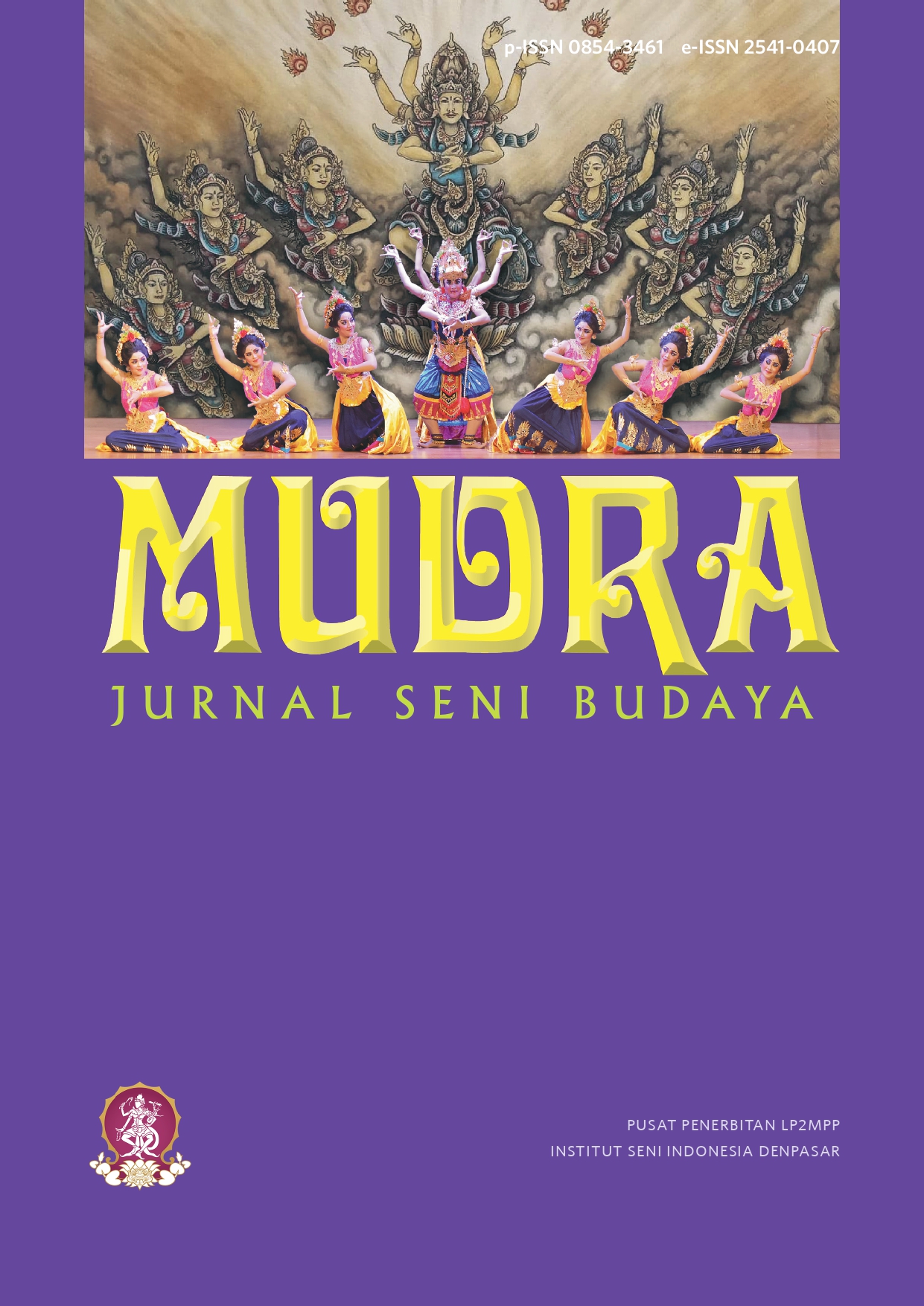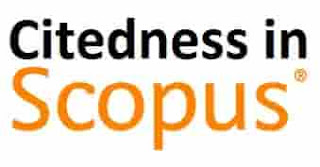From Spark to Sculpture: A Practice-Based Exploration of Betta Fish Form Using Stainless Steel Rods
DOI:
https://doi.org/10.31091/mudra.v40i4.3122Keywords:
Betta Fish Sculpture, Biomorphic Design, Practice-Based Research, Shielded Metal Arc Welding (SMAW), Stainless Steel RodsAbstract
The development of three-dimensional creation techniques using metal materials, particularly stainless steel, provides opportunities for artists and designers to explore unique and aesthetically valuable organic curves, especially in functional objects such as furniture, interior accessories, public sculptures, and metal crafts. These biomorphic forms are chosen because they differ from common geometric shapes and can create visual appeal. This research aims to explore the application of the SMAW welding technique on stainless steel rods to create three-dimensional artworks with organically inspired forms. The study employs a practice-based research method, combining direct practice with result analysis to generate new knowledge. The technique used is Shielded Metal Arc Welding (SMAW), which utilizes heat from an electric arc between a shielded electrode and the base metal to melt and fuse the materials into a solid alloy. In this research, 4 mm diameter stainless steel rods were used as the primary material, and the process included preparation, welding execution, grinding, polishing, documentation, and practice-based analysis. The findings demonstrate the successful application of the SMAW technique in forming betta fish fins with organic curve characteristics. This work proves that practice-based research is an effective approach for generating artistic and design innovations through material and technique exploration. This research contributes to the development of experimental material-based metal crafts and enriches contemporary art discourse by creating original works through the innovative application of the SMAW welding technique to stainless steel rods in producing complex three-dimensional organic forms, such as betta fish fins, which have rarely been explored in previous studies.
Downloads
References
B. Mullen, “Art on stainless steel,” in Stainless Steel for Architectural Use, C. A-10, Ed., Pennsylvania: ASTM International, 1969, p. 6. doi: https://doi.org/10.1520/STP45897S.
K. Hara, Designing design. Zurich: Lars Müller Publishers, 2014.
S. Lawson, Furniture design: An introduction to development, materials and manufacturing. London: Laurence King Publishing, 2013.
L. Hosey, The shape of green: Aesthetics, ecology, and design, 2nd ed. Washington, DC: Island Press, 2012.
Q. Zhang and S. Y. Wang, “The influence and application of stainless steel to modern sculpture,” Appl. Mech. Mater., vol. 620, pp. 417–420, 2014.
L. W. Zahner, Stainless steel surfaces: A guide to alloys, finishes, fabrication and maintenance in architecture and art. New Jersey: John Wiley & Sons, Inc., 2019.
J. W. Mills, The technique of sculpture. New York: Watson-Guptill Publications, 1976.
L. Slobodkin, Sculpture: Principles and practice. New York: Dover Publications, Inc., 1949.
M. E. Santoso and E. Djakaria, “Las busur untuk penciptaan karya 3 dimensi permukaan lengkung bahan as stainless steel bentuk oval,” Corak J. Seni Kriya, vol. 9, no. 2, pp. 151–168, 2020, doi: https://doi.org/https://doi.org/10.24821/corak.v9i2.4076.
M. E. Santoso, “Riset praktik eksperimental las busur dengan material as stainless steel untuk penciptaan bentuk katak pohon,” Brikolase J. Kaji. Teor. Prakt. dan Wacana Seni Budaya Rupa, vol. Vol 13, no. No 1, pp. 1–21, 2021, doi: https://doi.org/10.33153/brikolase.v13i1.3644.
Mulyadi and Iswanto, Buku ajar teknologi pengelasan. Universitas Muhammadiyah Sidoarjo: UMSIDA Press, 2020. [Online]. Available: https://eprints.umsida.ac.id/8386/1/Buku Ajar_Iswanto.pdf
A. L. Razik, S. Subagyo, M. Alkibzi, Hernita, D. R. Trilaksono, and L. Listriana, Modul pembelajaran center of excellence welding di SMK dasar-dasar pengelasan. Jakarta: Direktorat Pembinaan Sekolah Menengah Kejuruan Direktorat Jenderal Pendidikan Dasar dan Menengah Kementerian Pendidikan dan Kebudayaan, 2018. [Online]. Available: https://repositori.kemdikbud.go.id/10819/1/Modul Pembelajaran Center of Exellence Dasar-Dasar Pengelasan.pdf
R. Finch, Welder’s Handbook: A Complete Guide to MIG, TIG, Arc & Oxyacetylene Welding, 2nd ed. Tucson: HPBooks, 1997.
F. J. Tulung, Buku Ajar Praktek Las Listrik. Tasikmalaya: Perkumpulan Rumah Cemerlang Indonesia, 2022. [Online]. Available: https://www.rcipress.rcipublisher.org/index.php/rcipress/catalog/download/347/525/1365-1?inline=1
D. W. Orr, The nature of design: Ecology, culture, and human intention. London: Oxford University Press, 2004.
S. Gherardi, How to conduct a practice-based study, problems and methods, 2nd ed. Cheltenham: Edward Elgar Publishing, 2019.
A. Tower, “Art as a Future-Generating Machine: Rheinberger’s Experimentalism in Practice-Based Arts Methodologies,” Leonardo, vol. 55, no. 2, pp. 145–148, 2022, doi: https://doi.org/10.1162/leon_a_02103.
M. Johnson and T. Oates, “The Bauhaus as Education Model: Enduring Design and Powerful Knowledge,” Int. J. Art Des. Educ., 2025, doi: https://doi.org/10.1111/jade.12598.
L. Skains, Designing and conducting practice-based research projects: A practical guide for arts student researchers. Bristol: Intellect Ltd, 2024.
M. Matthews, “Arts Practice as the Daily Extraordinary: A Philosophy of Inclusivity,” Int. J. Art Des. Educ., vol. 43, no. 3, pp. 448–465, 2024, doi: https://doi.org/10.1111/jade.12520.
C. Vear, Ed., The routledge international handbook of practice-based research, 1st ed. London: Routledge, 2024.
L. Candy and E. Edmonds, “Practice-based research in the creative arts: Foundations and futures from the front line,” Leonardo, vol. 51, no. 1, pp. 63–69, 2018, doi: https://doi.org/10.1162/LEON_a_01471.
L. Candy, “Reflective practice variants and the creative practitioner,” in The Routledge International Handbook of Practice-Based Research, C. Vear, Ed., London: Routledge, 2024, ch. Section 3.
B. Bassot, The reflective practice guide: An interdisciplinary approach to critical reflection, 2nd ed. London: Routledge, 2023.
B. M. Costello, “Finding the groove: The rhythms of practice-based research,” in The Routledge International Handbook of Practice-Based Research, 1st ed., C. Vear, Ed., London: Routledge, 2024, ch. Section 3.
L. Puppe, H. Jossberger, and H. Gruber, "Creation Processes of Professional Artists and Art Students in Sculpting," Empir. Stud. Arts, vol. 39, no. 2, pp. 171-193, 2021, doi: https://doi.org/10.1177/0276237420942716.
I. Kakkar, A. Pandey, M. Gupta, H. Jaiswal, and N. Kishore, "ANSI/AWS E308-16 Rutile Electrode : The Effect of Endothermic Materials on Undercut Defect on Low Carbon Stainless Steel," J. Inst. Eng. Ser. C, vol. 94, no. 4, pp. 293-297, 2013, doi: 10.1007/s40032-013-0092-y.
M. N. Ilman and Sehono, Ilmu dan teknologi pengelasan. Yogyakarta: Gadjah Mada University Press, 2024.
K. Susanta and K. Syauqi, Dasar-dasar teknik pengelasan dan fabrikasi logam. Jakarta: Kementerian Pendidikan, Kebudayaan, Riset, dan Teknologi, 2023.
Buehler, “Grinding and polishing guide,” Buehler.com. Accessed: Jan. 19, 2025. [Online]. Available: https://www.buehler.com/blog/grinding-and-polishing-guide/
K. R. McCoy, The art of sculpture welding: From concept to creation. South Norwalk: Industrial Press, Inc., 2015.
L. Candy, “Practice Based Research: A Guide,” Sydney, 2006. [Online]. Available: https://www.researchgate.net/publication/257944497_Practice_Based_Research_A_Guide
Y. N. Kenett, “The Role of Knowledge in Creative Thinking,” Creat. Res. J., vol. 37, no. 2, pp. 242–249, 2025, doi: https://doi.org/10.1080/10400419.2024.2322858.
J. Wagemann and S. Starosky, “Aesthetic Production in Clay Molding: Mental and Dynamically Embodied Action Mediate Between Formal and Material Aspects of Experience,” Empir. Stud. Arts, vol. 43, no. 1, pp. 153–187, 2025, doi: https://doi.org/10.1177/02762374241255875.
U. Ströbele, “Elasticity in twentieth-century sculpture,” Sculpt. J., vol. 33, no. 1, pp. 71–92, 2024, doi: https://doi.org/10.3828/sj.2024.33.1.05.
M. Tröndle and W. Tschacher, “The Physiology of Phenomenology: The Effects of Artworks,” Empir. Stud. Arts, vol. 30, no. 1, pp. 75–113, 2012, doi: https://doi.org/10.2190/EM.30.1.g.
K. S. Bordens, “Contextual Information, Artistic Style and the Perception of Art,” Empir. Stud. Arts, vol. 28, no. 1, pp. 111–130, 2010, doi: https://doi.org/10.2190/EM.28.1.g.
G.-A. Costin, G.-V. Troncuta, A.-C. Lese, and N. Baroiu, “Art and engineering in metal sculptures,” J. Ind. Des. Eng. Graph., vol. 11, no. 1, pp. 23–28, 2016.
A. K. Kanwal, “An Analytical Study of Patina Recipes with Reference to Brass Metal Sculptures,” ShodhKosh J. Vis. Perform. Arts, vol. 5, no. 1, 2024, doi: https://doi.org/10.29121/shodhkosh.v5.i1.2024.874.
B. Altinoba, “‘Anybody can do sculpture, it is purely mechanical’: Harriet G. Hosmer and the relation between sculpture, reproduction and machine invention,” Sculpt. J., vol. 33, no. 1, pp. 29–46, 2024, doi: https://doi.org/10.3828/sj.2024.33.1.03.
F. Duque, “Public art and the making of urban space,” City, Territ. Archit., vol. 1, no. 1, 2014, doi: https://doi.org/10.1186/2195-2701-1-4.
C. Gao, F. Wang, X. Hu, and M. Zhang, “Research on the Analysis and Application of Polymer Materials in Contemporary Sculpture Art Creation,” Polymers (Basel)., vol. 15, no. 12, 2023, doi: https://doi.org/10.3390/polym15122727.
E. J. Hood and S. Travis, “Critical Reflective Practice for Art Educators,” Art Educ., vol. 76, no. 1, pp. 28–31, 2023, doi: https://doi.org/10.1080/00043125.2022.2131201.
Downloads
Published
How to Cite
Issue
Section
License
Copyright (c) 2025 Miky Endro Santoso, Tessa Eka Darmayanti

This work is licensed under a Creative Commons Attribution-NonCommercial-ShareAlike 4.0 International License.
- Copyright on any open access article in a journal published by Mudra Jurnal Seni Budaya is retained by the author(s).
-
The Creative Commons Attribution License 4.0 formalizes these and other terms and conditions of publishing articles.










